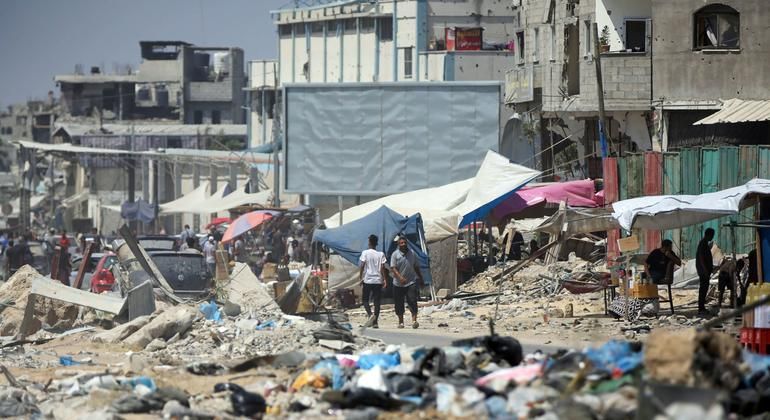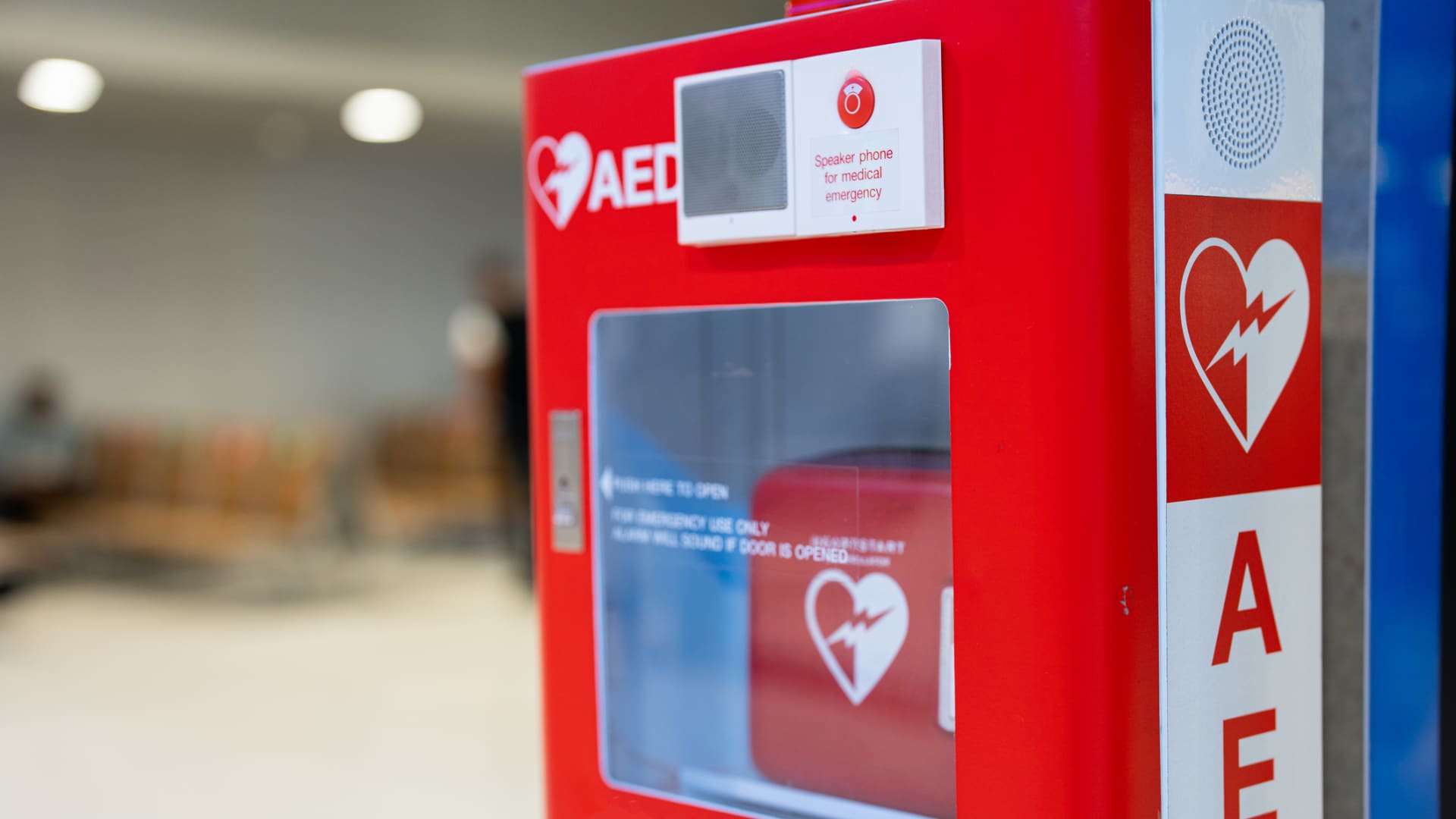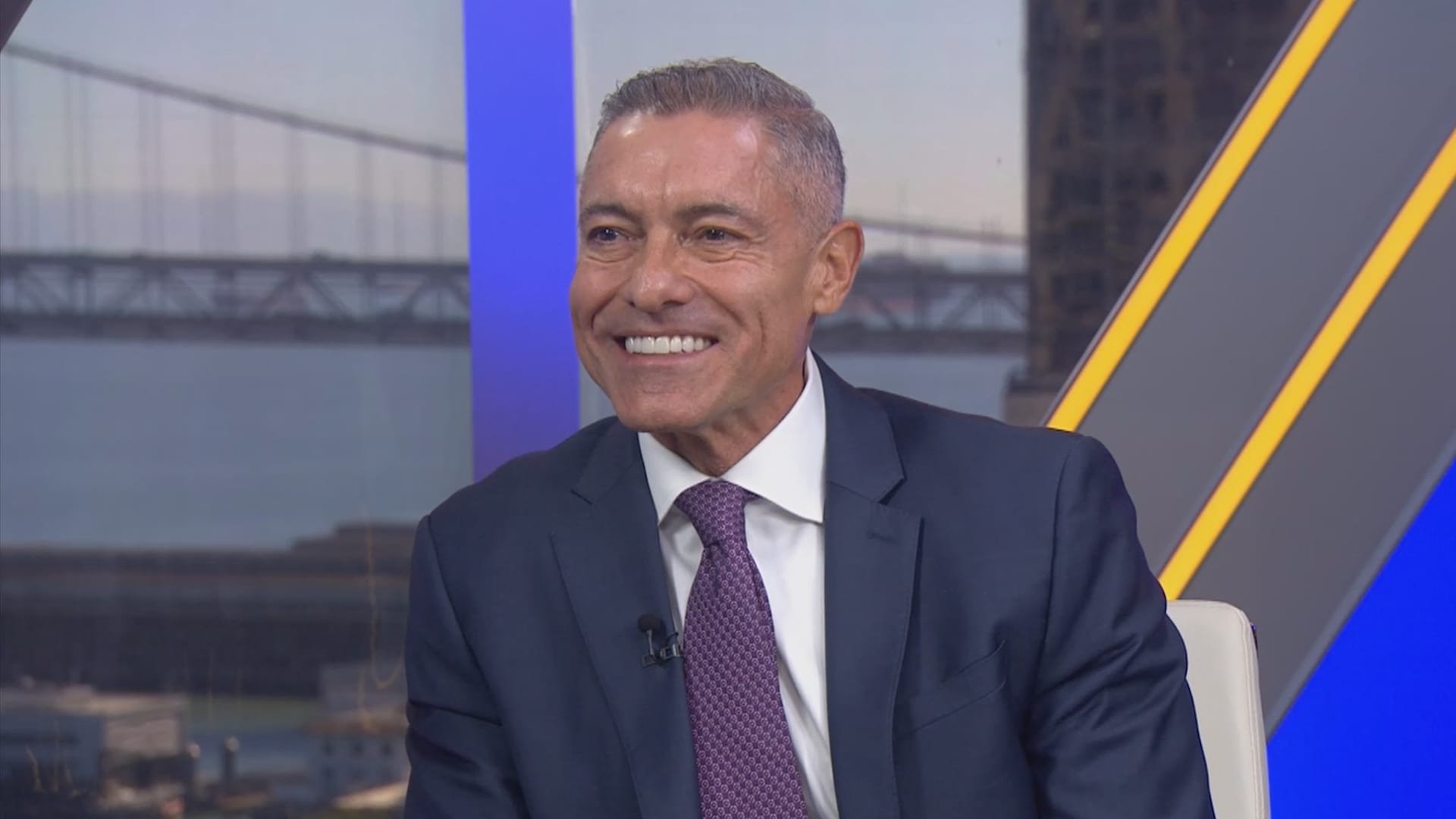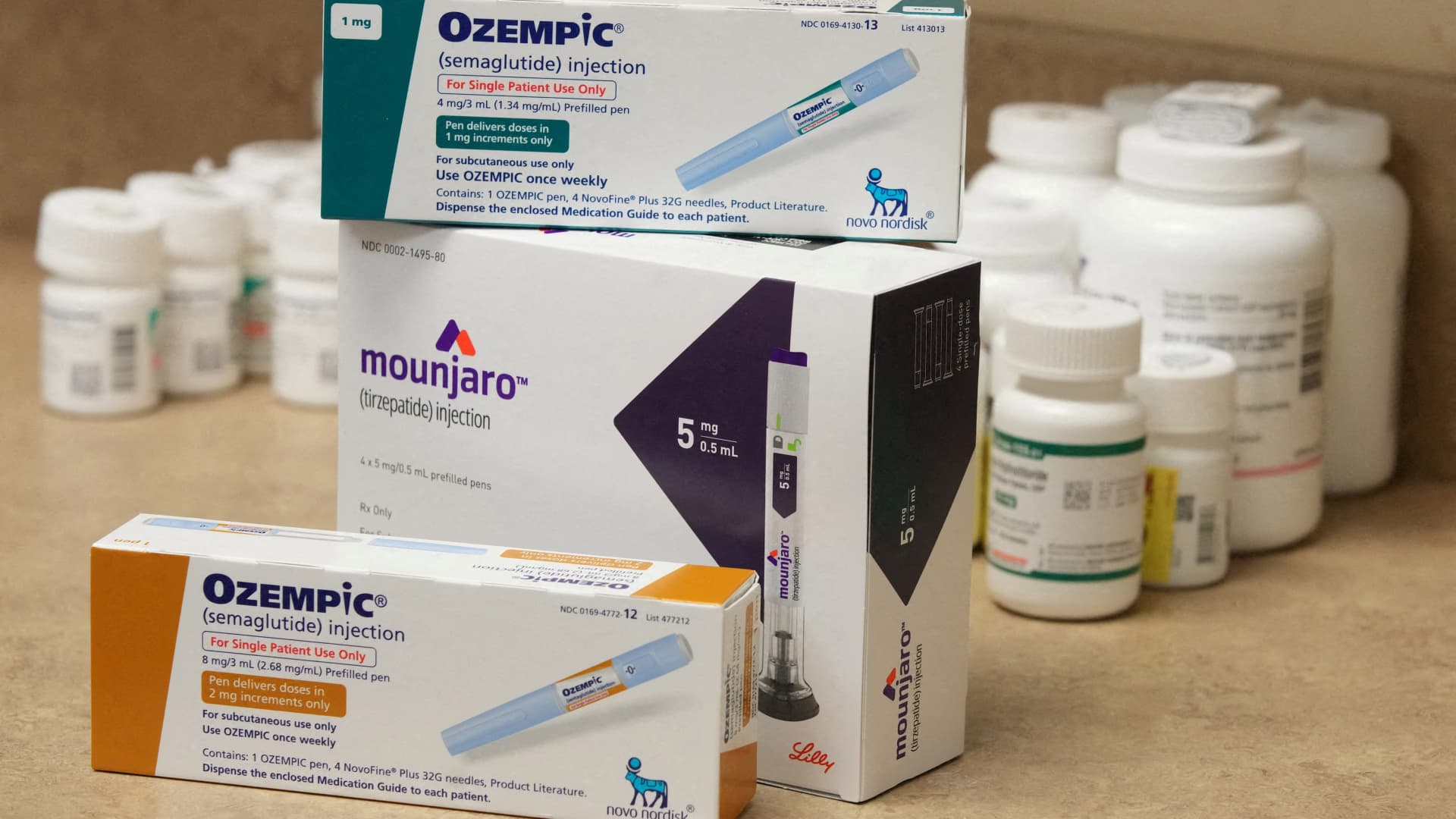Muhannad Hadi, the UN Deputy Special Coordinator for the Middle East Peace Process, and Antonia De Meo, Deputy Commissioner-General of the UN agency that assists Palestinian refugees, UNRWA, briefed the Security Council on the dire situation.
“For nearly 10 months, Palestinians and Israelis have experienced unspeakable suffering, grief, sadness and loss.“More than two million people in Gaza remain trapped in an unending nightmare of death and destruction on a staggering scale,” Ms De Meo told ambassadors.
“Their lives are dominated by fear, thirst, hunger, disease, dehumanization, lack of basic sanitation and repeated displacement. It is a relentless struggle, often lasting hours, day after day.“Famine remains a risk, even in southern Gaza. Infectious diseases are on the rise.”
Deeply traumatized children
The situation is particularly alarming for the enclave's 625,000 children, who are deeply traumatised and whose future is at risk.
Most UNRWA schools – places of study for about half of the children and now used as shelters by displaced people – have been destroyed or severely damaged in Israeli military operations. Eight of them were attacked in the past two weeks alone.
Before October 7 last year – the day Hamas and Palestinian armed groups brutally attacked Israeli communities and the subsequent Israeli military operation – the agency operated 183 schools across the Gaza Strip.
More than 38,000 people are reported to have died and more than 88,000 have been injured.
Mortal diseases
In addition, the threat of deadly contagious diseases continues to grow by the day amid mountains of rubbish and overflowing sewage in displaced people's settlements.
People with pre-existing conditions such as cancer, kidney failure or diabetes are also unable to access the life-saving treatment they need. And tens of thousands of other patients require urgent medical evacuation.
A wide view of the Security Council meeting, with Antonia De Meo (left) and Muhannad Hadi (right) on screen.
Polio is coming
The latest spectre to loom over children is polio, a debilitating and incurable disease that causes paralysis, following the discovery of the highly infectious disease in sewage samples.
While the disease is effectively preventable through vaccines, a severely damaged and weakened healthcare system in Gaza means that children have not received crucial vaccines.
Although no cases of polio have yet been recorded, without immediate action it is “It's just a matter of time“before it reaches the thousands of children left unprotected, the UN's World Health Organization (WHO) warned.
In response, the UN health agency is sending one million polio vaccines, which, conditions permitting, will be administered to children in the coming weeks.
Delivering aid, an impossible task
Mr. Hadi stressed that amid the death and destruction, humanitarian workers are “sparing no effort to provide life-saving assistance to the most vulnerable.”
“But there is a gap between what should be done and what humanitarians can do.“The problem is not the commitment or the will of humanitarian workers, but the inability to fulfil our mandate, and that is beyond our control,” he warned, stressing the lack of an enabling environment.
These measures include ensuring the protection of humanitarian workers and those they are trying to assist; the unhindered and safe receipt, dispatch and delivery of all humanitarian aid; no limitations on the quantity and type of humanitarian items entering Gaza; and visas for all UN staff and international non-governmental organisation (INGO) workers.
“The list of prerequisites is long,” he said, adding that “whatever form the conflict may take in the near future, humanitarian workers must be able to safely access populations in need wherever they are in Gaza, across the Strip.”












